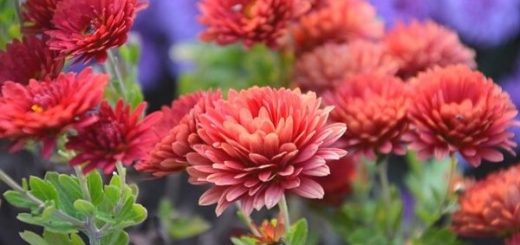Wallflower Care at Home: How to Grow?

Wallflower: Night Fragrance Representing Love and Purity
Representing love and purity, the wallflower takes its name from the Persian word Şebbuy, which means the scent of the night. This flower, which smells like a carnation, fascinates everyone with its scent. Wallflower, which is usually grown in gardens, adorns the environment with its colorful flowers.
Let’s say from the beginning; This article has been prepared for those who want to grow wallflowers in their home, balcony, terrace, or garden. Here are the ways to care for and grow gillyflower at home with all the steps and tips step by step …
What is Wallflower?
- Wallflower is an ornamental plant produced by seed.
- Its homeland is Europe.
- It represents love and purity. It takes its name from the Persian word şebbuy. In Persian, wallflower means night scent.
- The Latin name of the flower is Matthiola.
- It is a member of the Brassicaceae family.
- The scent of hibiscus is similar to cloves. The flowers of this plant contain essential oil. Therefore, the smell is very intense.
- However, the essential oil in question does not have any medicinal benefits.
- It is one of the flowers used in the perfume and cosmetics industry.
- Wallflower opens in 4 parts. Its flowers are orange, yellow, white, pink, and purple.
- Its flowers are many, but its leaves are very few. In fact, this is one of the most important features of the wallflower flower that makes it interesting.
- It can usually grow up to 50 cm in length but can grow up to 80 cm in length if well cared for.
- It likes sunny, semi-shaded places and moist soil. It does not like very cold and very hot.
- Wallflower can be grown in any season of the year. This flower is very easy to care for.
- Wallflower cultivation is quite common in our country. Especially in recent years, it is produced in brown and red colors.
- Sebboy varieties are quite numerous. It is known that there are 3700 varieties and 30 genera. In our country, there are 515 varieties and 85 genera.
When to Plant Wallflower Seeds?
- Wallflower can be grown in any season, but there are 4 recommended time periods for sowing seeds. These are late July, October, November, and December.
- Seeds sown at the end of July are taken to their permanent place in September. The first flowers of this seed open in November or December.
- Seeds sown in October are taken to their permanent places when December comes. The permanent product of this seed is obtained only in the spring months.
- The seeds sown in November are taken to the place where they will stand permanently in January. The first flowers of this seed bloom again in spring.
- The seeds sown in December are taken to the place where they will stand permanently at the end of March. The first flowers bloom in the last days of spring.
Wallflower Care at Home: How to Cultivate it?
Soil and Pot Selection
- If you are going to grow wallflowers from seed, you should choose large-eyed viols. 104-eyed viols are generally preferred for seed sowing.
- What is a viol? For those who don’t know, let’s explain!
- The plastic apparatus used to germinate the seed is called viol. This apparatus is also known as the ovary among people.
- You can start the germination process by filling the viols with peat.
- Then water the peat with medicated water and plant the seed. At this stage, you should take care to place the seed in the middle of the viol pores and leave a 20 cm gap between the seeds.
- After the seeds have germinated, they should be planted where they will stand permanently.
- Wallflower loves quality and dark soil. Well-drained, mineral-rich soil is ideal for this flower.
Heat and temperature
- After the seeds are planted, they are expected to germinate. The ideal temperature for germination is between 15-18 degrees.
- Germination occurs approximately 2 weeks after planting. From this moment on, the temperature should be lowered to 10 degrees.
Irrigation
- After germination of gilly seed, it is planted where it will stand permanently.
- A few days after planting, the soil should be watered with a hose from the bottom. This application protects the plant from diseases during the germination process.
- Irrigation with the hose is done only once. Because the recommended irrigation method for wallflowers is drip irrigation.
- The soil should always be moist.
Positioning
- Wallflower is often grown in gardens.
- This flower likes places with indirect sun. It is not resistant to very cold and very arid regions.
- It is especially resistant to high heat and temperature.
- It shows a very fast and healthy development when grown in a suitable environment.
Tips for Growing Wallflower Flowers
Wallflower care is quite easy, but like any job, it has some tricks. You should not forget that Wallflower is much taller when it is looked after well and follows a healthy development process! Here are the tricks you need to know when growing wallflowers at home:
- Wallflower loves moist soil. Therefore, you should water it regularly without letting the soil dry out.
- The stem part of this plant is especially prone to rot. Therefore, it should not be over-watered.
- As an irrigation method, you should definitely choose drip irrigation.
- If you are going to plant in a pot rather than a garden, you should not change the location of the pot frequently.
- You should plant the flower in a place that does not receive excessive wind and excessive light.











